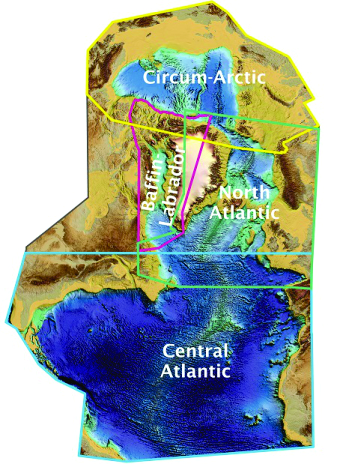Deformable Plate Reconstructions
Hyperextended margins
Magma-rich and magma-poor margins
Frontier and underexplored regions
Salt provinces
PlateDEF plate models quantify and accommodate the amount and direction of crustal stretching and shortening for key tectonic events
at convergent, extensional and transform margins using a proprietary palinspastic deformable-margin plate reconstruction software and method. Palinspastic deformable-margin plate kinematic models
are independent of any one model for rifted margin formation
and quantitively restore the history of crustal deformation and multiple episodes of rifting or compression using
geological and geophysical constraints. Unlike rigid plate models and deformable models that restore only the continent-ocean boundaries (COB),
palinspastic deformable-margin models accommodate margin asymmetry, allow for heterogeneous plane strain and are used
to produce palinspastically restored pre-rift or pre-collision geometry for continental boundaries, intra-plate basins and other tectonic features.
PlateDEF multi-client deformable plate reconstruction studies from GeoArctic provide New Ventures and
Frontier explorationists with the regional structural and tectonic understanding to support
prospect-specific exploration in the North and Central Atlantic, Circum-Arctic and Baffin-Labrador-West Greenland.
GeoArctic has pioneered the use of deformable plate reconstructions combined with thermal subsidence and flexural upift modelling to help provide a
clearer understanding of the relationship between hyperextension, sedimentary basin evolution, and basin margin uplift. These new methods of evaluating hyperextended
margins provide input for environment of deposition interpretations and for basin modelling.
PlateDEF multi-client studies include a report and digital data and are available individually or as a fully integrated package .
